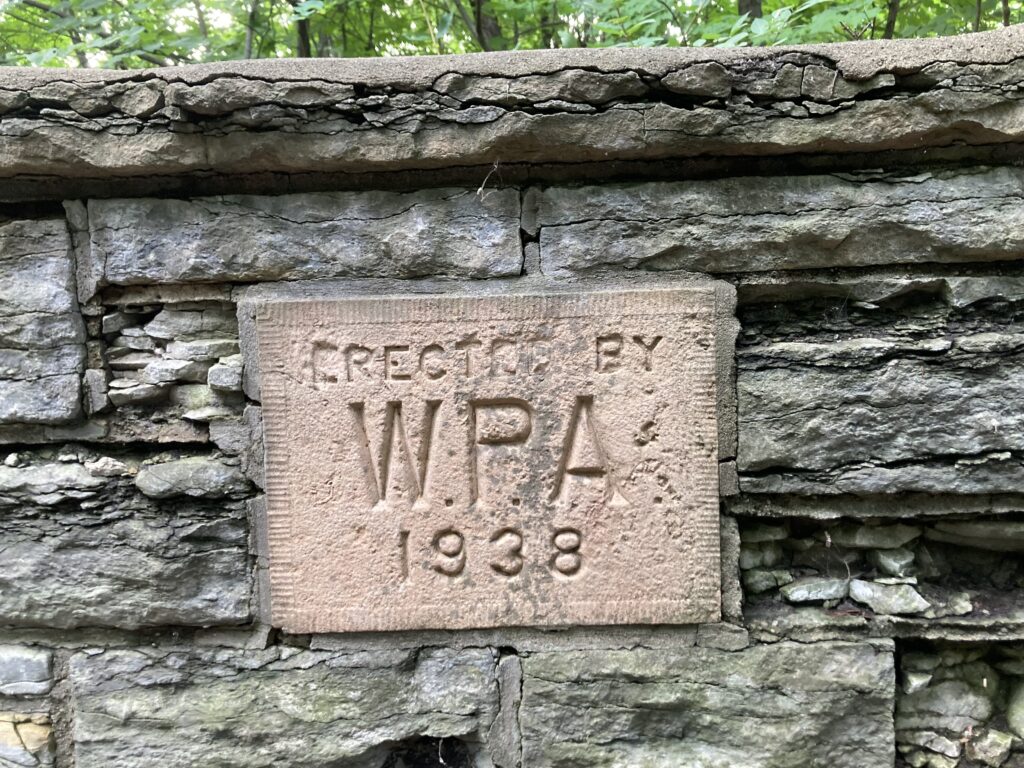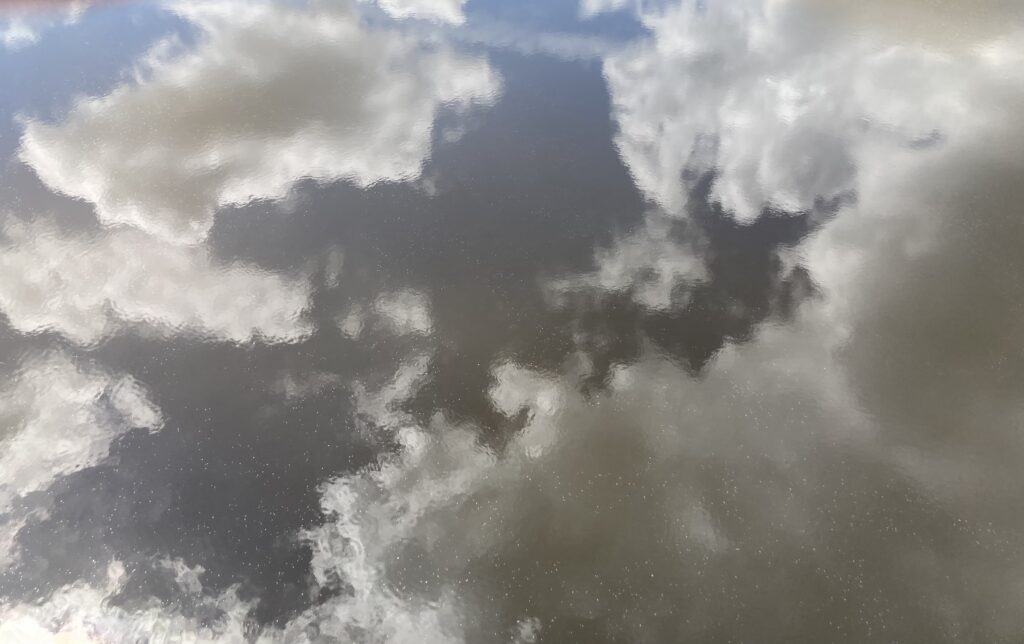2.5 miles
2 trails
66 degrees
dew point: 61
AQI: 81 (moderate)
Better air! Well, less smoky air. Also, humid air. Heavy air. I checked the weather for rain. Nope. Leaving the house, I was greeted (or threatened or warned) by my next door neighbor, the bluejay. Screech! Screech! I admired the beautiful flowers — dark and light purple, orange, yellow — of the neighbor who lives with Matt the Cat. On the paved path, I glanced down at the oak savanna — dark green — and over at the leaning, almost twisted, fence. Heard the coxswain giving rowers their workout, something about 75ers, and wishing she had a micro-stop on her watch (at least, I think that’s what she said). Also heard rustling in the leaves, sounding bigger than a squirrel. A dog? A turkey? Heading down the hill at the Cleveland overlook, the river looked green and still through the trees. Someone was sitting on the bench in the grass near the stone wall. It was dark enough that the cars and bikes had their headlights on.
Because it’s cooler than the air is better, I have the windows open. Several squirrels are rooting around in the bushes. The sound is irritating me as I write this entry.
Listened to the cars and the rowers and the birds running south and on the Winchell Trail, then a few songs by Lawrence for the last stretch from the 38th street steps to home.
Swimming One Day in August
Because the big beach at Lake Nokomis has been closed due to high levels of e-coli, I haven’t had a chance to swim yet in August. Finally today, at Cedar Lake, I will start working towards my goal of swimming a total of 24 hours (= 1 day) in August. As part of that project, I’m devoting time out of the water to swimming in Minneapolis lakes, too by reading, researching, reflecting, and writing on water. Today, I’m reviewing the history of Cedar Lake, thanks to a masters thesis I found a few years ago.
Already today, I’ve been reading about the dredging of the lakes. 2.5 million cubic yards of peat and sand and wetland were dredged out of nokomis; it took 4 non-stop years. The sand went to the beach, the peat and wetland to making the park bigger and building a neighborhood. Why dredge? Not just because it would make a lake I could swim in a century and a half later. Original Park Board Superintendent Theodore Wirth was thinking about economic growth and the future of a city:
Wirth is outspoken in his belief in the utility of taming nature to increase land value and develop the city’s natural resources. By dredging and creating more shoreline, the park board could improve the parkland, thereby making the property surrounding the parkland a more desirable place to live. The increased value of the private property could provide a greater tax base for the city and for the Park Board, which could use the revenue to continue to acquire and improve park space.
Cedar Lake History/ Neil Trembley
swim: 4 loops
75 minutes
cedar lake open swim
77 degrees
Wonderful night for a swim! Calm water, not too warm or too cold. Not too crowded. And even with fogged up goggles (I haven’t treated them in a few weeks), I didn’t get too far off course.
The water felt a little sluggish — not buoyant. There were tons of sharp and scratchy vines, some individual strands, others in clumps. The water was opaque — no fish sightings tonight.
The sky was white; no clouds to notice. I think I remember seeing one bird. Oh — every so often the sky would break open and there was sun. It didn’t last that long.
I wanted to think about Mary Oliver’s “deepening and quieting” but there was none of that tonight. I was swimming hard — not all out, but not stopping either.



